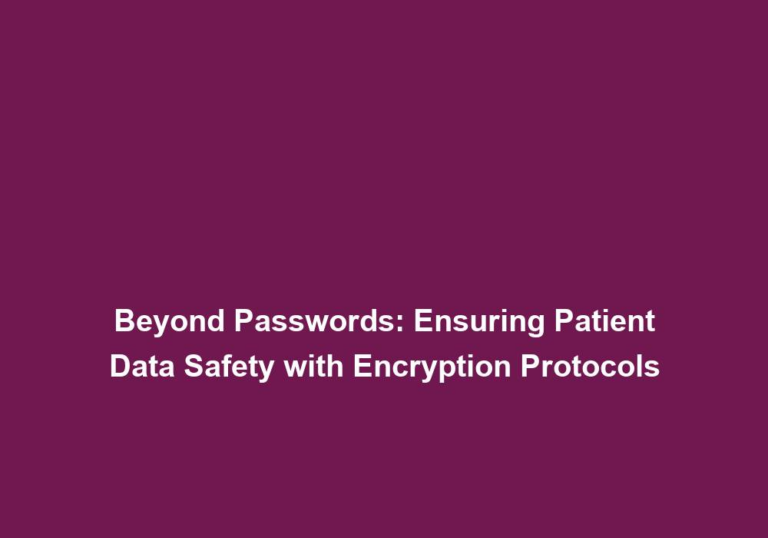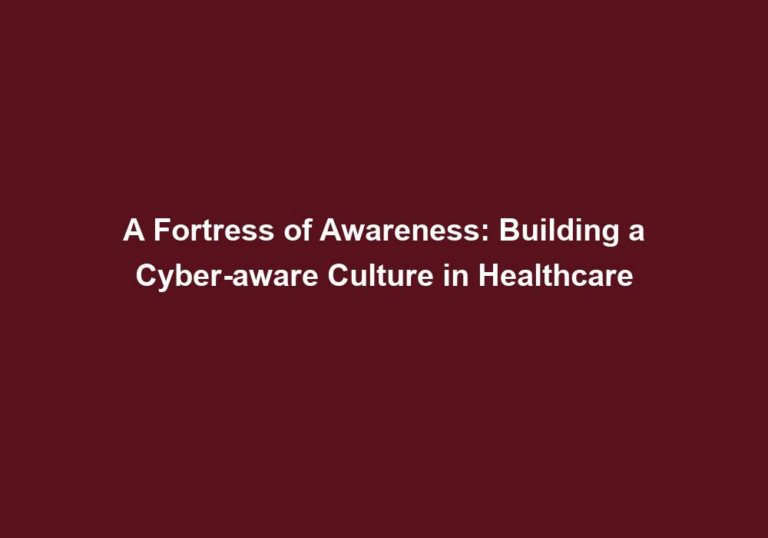From Record to Recovery: The Art of Digital Patient Data Management
In the rapidly evolving field of healthcare, the management and organization of patient data have become increasingly crucial. With the advent of digital technology, the traditional paper-based record system has been replaced by digital patient data management systems. This article delves into the art of digital patient data management, exploring its benefits, challenges, and the importance of maintaining data security and privacy.
The Benefits of Digital Patient Data Management
-
Efficiency: Transitioning from paper records to digital systems brings about significant improvements in healthcare providers’ workflows, leading to enhanced efficiency. With instant access to patient data, healthcare professionals can make informed decisions quickly, ultimately resulting in better patient outcomes. They can easily retrieve and update patient information, eliminating the need for manual searching or waiting for physical files.
-
Accessibility: Digital patient data management allows healthcare providers to access patient records from anywhere at any time. This accessibility enhances the continuity of care, especially in emergency situations or when patients seek treatment at different healthcare facilities. Even during off-hours, healthcare professionals can retrieve critical patient information, enabling them to provide timely and appropriate care.
-
Improved Accuracy: Manual data entry is prone to errors, whereas digital systems provide a higher level of accuracy. With automated data capture and validation, healthcare professionals can ensure that patient information is recorded correctly, minimizing the risk of medical errors. Digital systems also allow for real-time updates, reducing the chances of outdated or duplicate information.
-
Data Analytics: Digital patient data management systems enable healthcare organizations to harness the power of data analytics. By analyzing large volumes of patient data, healthcare providers can identify trends, patterns, and insights to enhance treatment plans, conduct research, and improve population health management. These data-driven insights can lead to personalized care, early detection of diseases, and proactive interventions.
The Challenges of Digital Patient Data Management
-
Data Security and Privacy: With the digitization of patient data, ensuring its security and privacy becomes paramount. Healthcare organizations must implement robust measures to protect sensitive patient information from unauthorized access, data breaches, and cyber threats. This includes implementing secure access controls, encrypting data during transmission and storage, regularly updating security measures, and complying with data protection regulations.
-
Interoperability: The seamless exchange of patient data between different healthcare systems and providers is crucial for effective care coordination and continuity. However, interoperability remains a significant challenge in healthcare due to the lack of standardized data formats and systems. Healthcare organizations should adopt standardized data formats like Health Level 7 (HL7) and Fast Healthcare Interoperability Resources (FHIR) to enable seamless data exchange. They should also invest in Health Information Exchanges (HIEs) to facilitate data sharing among participating organizations.
-
Data Quality: Digital patient data management relies on the accuracy and completeness of the data entered. Incomplete or inconsistent data can lead to erroneous diagnoses, compromised patient safety, and inaccurate research outcomes. Therefore, healthcare providers must prioritize data quality assurance processes by providing staff training on accurate data entry, implementing data validation checks, and regularly auditing data quality.
Ensuring Data Security and Privacy
To safeguard patient data and ensure privacy, healthcare organizations must:
-
Implement Secure Access Controls: Limit access to patient data based on job roles, implementing strong user authentication measures such as password policies, multi-factor authentication, and role-based access controls. This ensures that only authorized individuals can access the data.
-
Encrypt Data: Encrypting patient data during transmission and storage adds an extra layer of protection, making it unreadable to unauthorized individuals. This prevents data breaches and unauthorized access to sensitive information.
-
Regularly Update Security Measures: Healthcare organizations should stay updated with the latest security patches, conduct regular security audits, and educate staff members about cybersecurity best practices. This proactive approach helps identify and address vulnerabilities in the system.
-
Comply with Data Protection Regulations: Adhering to data protection regulations, such as the Health Insurance Portability and Accountability Act (HIPAA) in the United States, helps ensure the privacy and security of patient data. Compliance with these regulations includes implementing privacy policies, obtaining patient consent for data usage, and securely storing and transmitting data.
Enhancing Interoperability
To overcome the challenges of interoperability, healthcare organizations should:
-
Adopt Standardized Data Formats: Embracing standardized data formats, such as HL7 and FHIR, enables seamless data exchange between different systems and providers. Standardization allows for better care coordination, reduced errors, and improved patient outcomes.
-
Invest in Health Information Exchanges (HIEs): HIEs facilitate the sharing of patient data among participating healthcare organizations, improving care coordination and continuity. By joining HIEs, healthcare providers can access comprehensive patient records from various sources, enhancing the overall quality of care.
-
Promote Data Sharing Policies: Encouraging data sharing policies among healthcare providers promotes a collaborative approach to patient care. Open and secure data sharing can enhance clinical decision-making and contribute to research advancements. Establishing trust and agreements for data sharing among organizations is crucial for successful interoperability.
Ensuring Data Quality
To maintain data quality in digital patient data management, healthcare organizations should:
-
Provide Staff Training: Educating healthcare professionals about the importance of accurate and complete data entry helps maintain data quality standards. Training programs should cover proper data entry techniques, data validation processes, and the significance of data integrity.
-
Implement Data Validation Checks: Automated data validation checks can flag inconsistencies, errors, or missing information, prompting healthcare professionals to review and correct the data. These checks can help maintain accuracy and completeness, reducing the risks associated with incorrect data entry.
-
Regularly Audit Data Quality: Conducting periodic audits of patient data ensures ongoing data quality and allows for timely corrections and improvements. Audits help identify data entry errors, inconsistencies, and gaps, enabling healthcare organizations to take corrective actions and improve overall data quality.
In conclusion, the art of digital patient data management revolutionizes the way healthcare providers handle and utilize patient information. By embracing digital systems, healthcare organizations can reap the benefits of efficiency, accessibility, improved accuracy, and data analytics. However, it is crucial to address the challenges of data security, privacy, interoperability, and data quality. By implementing robust security measures, promoting interoperability, and prioritizing data quality, healthcare providers can unlock the full potential of digital patient data management, leading to better patient care and outcomes.







